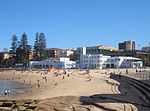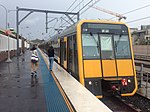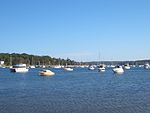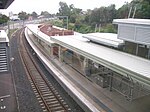Shark Island (Cronulla Beach)
BodyboardingCronulla, New South WalesNew South Wales geography stubsSurfing locations in New South Wales
Shark Island is a dangerous reef break about 100 metres off the coast of Cronulla, in Sydney New South Wales, Australia. It comprises a rock ledge that is fully exposed at low tide. The island is a well-known bodyboarding and surfing location. The wave can stand up fast and violently ("jack up" in surfing jargon), making it difficult and dangerous. The island is regarded by bodyboarders as producing one of the "heaviest" waves in the world. The annual Shark Island Challenge bodyboarding contest is held there, as well as the annual Shark Island Swim Challenge held at Cronulla Beach.
Excerpt from the Wikipedia article Shark Island (Cronulla Beach) (License: CC BY-SA 3.0, Authors).Shark Island (Cronulla Beach)
The Esplanade, Sydney Cronulla
Geographical coordinates (GPS) Address Nearby Places Show on map
Geographical coordinates (GPS)
| Latitude | Longitude |
|---|---|
| N -34.05968 ° | E 151.15944 ° |
Address
The Esplanade
The Esplanade
2230 Sydney, Cronulla
New South Wales, Australia
Open on Google Maps









